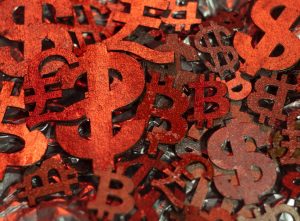The Ichimoku indicator is a powerful technical analysis tool that originated in Japan. It is a versatile indicator that can be used to analyze the market in multiple timeframes, and it can be used to identify trends, momentum, and potential reversal points. In this article, we will discuss how to use the Ichimoku indicator in forex trading.
The Ichimoku indicator consists of several lines that work together to provide a comprehensive view of the market. These lines are the Tenkan-sen, Kijun-sen, Senkou Span A, Senkou Span B, and Chikou Span. Let’s take a closer look at each of these lines and how they work.
Tenkan-sen: The Tenkan-sen is also known as the conversion line. It is a moving average of the highs and lows of the last nine periods. The Tenkan-sen is used to identify short-term trends and potential reversal points.
Kijun-sen: The Kijun-sen is also known as the base line. It is a moving average of the highs and lows of the last 26 periods. The Kijun-sen is used to identify medium-term trends and potential support and resistance levels.
Senkou Span A: The Senkou Span A is the average of the Tenkan-sen and Kijun-sen, plotted 26 periods ahead of the current price. The Senkou Span A is used to identify the current trend and potential support and resistance levels.
Senkou Span B: The Senkou Span B is the average of the highs and lows of the last 52 periods, plotted 26 periods ahead of the current price. The Senkou Span B is used to identify long-term trends and potential support and resistance levels.
Chikou Span: The Chikou Span is the current price, plotted 26 periods behind the current price. The Chikou Span is used to confirm the trend and potential reversal points.
Now that we have a basic understanding of the Ichimoku indicator, let’s discuss how to use it in forex trading.
Identifying the trend: The first step in using the Ichimoku indicator is to identify the trend. To do this, we look at the relationship between the Senkou Span A and Senkou Span B. If Senkou Span A is above Senkou Span B, we are in an uptrend. If Senkou Span A is below Senkou Span B, we are in a downtrend.
Entering a trade: Once we have identified the trend, we can use the Tenkan-sen and Kijun-sen to enter a trade. If the Tenkan-sen crosses above the Kijun-sen, we have a bullish signal. If the Tenkan-sen crosses below the Kijun-sen, we have a bearish signal.
Confirming the trend: We can use the Chikou Span to confirm the trend. If the Chikou Span is above the current price, we are in an uptrend. If the Chikou Span is below the current price, we are in a downtrend.
Identifying support and resistance levels: The Senkou Span A and Senkou Span B can be used to identify potential support and resistance levels. If the price is above both Senkou Span A and Senkou Span B, we have a strong bullish signal. If the price is below both Senkou Span A and Senkou Span B, we have a strong bearish signal.
Using the Ichimoku indicator in multiple timeframes: The Ichimoku indicator can be used in multiple timeframes to get a comprehensive view of the market. For example, if we are trading on the daily chart, we can use the Ichimoku indicator on the weekly and monthly charts to identify the long-term trend.
In conclusion, the Ichimoku indicator is a powerful technical analysis tool that can be used to identify trends, momentum, and potential reversal points. By understanding the different lines that make up the indicator, we can use it to make informed trading decisions. As with any technical analysis tool, it is important to use the Ichimoku indicator in conjunction with other analysis techniques to confirm our trading decisions.






